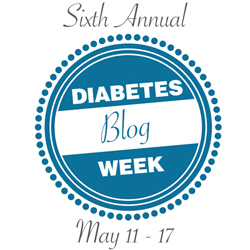Only one week before, we had been celebrating Mary Claire’s second birthday. I had reminded her grandma to keep her sippy cup close to her because she’d been so thirsty. Mary Claire had developed an extraordinary thirst. We thought the constant urination was just a result. We would change her soaked jammies and bedding twice a night. We went to Chick-Fil-A the night before, and Mary Claire wouldn’t go play-she only sat on the black mat outside and cried for water. When I got her up on May 23, 2004, I knew she was in trouble. I really “saw” her for the first time in two weeks. She wasn't moving, and she wasn’t hungry. Her eyes were dark and sunken, and I could see her ribs, hips, and pelvic bone sticking out of her skin. It scared me to death.
We immediately took her to the emergency room with her vomiting on the way there and in the parking lot all over my clothes. The doctor recognized the symptoms that I didn’t immediately. Her blood sugar was 560 (average is 80-110). She had large amounts of ketones-sugar/protein in her urine. Her breath also smelled sweet from the ketones. She was lethargic and wouldn’t move or talk.
We were devastated: she was diagnosed with Type I Diabetes. Her pancreas had stopped producing insulin, a hormone that enables people to get energy from food. Her body was trying to flush the extra sugar out of her body in her urine. It was dehydrating her faster than she could drink. Since she couldn’t digest the sugars from food, her body was using her fat and muscle for energy, which is very inefficient. She’d lost almost 8 pounds off of her tiny 30-pound frame. The large amount of ketones caused the nausea and vomiting.
We were sent to Arkansas Children’s Hospital for a few days. The endocrinologists carefully gave Mary Claire large amounts of insulin to bring down her blood sugars and ketones. They also gave her lots of fluids intravenously to rehydrate her. Ches and I began intensive training learning how to take care of Mary Claire’s newly diagnosed Type I Diabetes. Our lives haven’t been the same since.
We watched tons of videos and worked through workbooks teaching us about this autoimmune disorder and the range of emotions we would experience for the next few months (and still feel a year later). We had a diabetes nurse teaching us how to check her blood sugar with a meter before meals, snacks, and anytime she behaves strangely (whiny, irritable, lethargic, argumentative, etc.). We practiced giving insulin shots, and mixing long- and short-term insulins for an insulin “cocktail”. The dietician taught us to count carbohydrates and balance Mary Claire’s meals with protein and carbs and to be sure she ate plenty of fruits, veggies, breads, and dairy products.
In September 2002, our precious little girl was put on an insulin pump to help maintain tighter control over her blood sugar. At first she chewed the tubing, and played with the light feature and buttons at night. After two months of driving to Children’s Hospital for pump classes with the Medtronic representative, we began to figure out the pump. She now has three basal rates (constant infusion of insulin) for different requirements throughout the day, and four bolus rates (large doses given for meals based on the number of carbs eaten).
We still return to see her endocrinologist every three months to monitor her growth, blood pressure, circulation, A1c (3 month average blood sugar), and scarring from pump sites on her hips and tummy and blood checks on her fingers. We still check her blood 8-10 times a day, and change her pump site every three days to avoid infection. We count every carbohydrate that goes into her mouth to give her insulin for it. Her blood sugar can run high or low for a multitude of reasons: air bubbles in the tubing to her body, old insulin, bad pump site (either becoming insensitive to the insulin or her body fighting the tubing), not finishing her snack, eating someone else’s snack… We never are surprised with a blood sugar of 49 or 409.
We don’t focus on the future. We live one short day at a time. When I look too far in the future, I get upset and emotional. Diabetes is THE leading cause of kidney failure, adult blindness, and non-traumatic amputations. It is also a leading cause of nerve damage, stroke and heart attacks. Diabetes will also shorten Mary Claire’s life expectancy by an average of 15 years.
What gets me through is knowing she is still here with us, and that is a blessing. She's on "life support" with an insulin pump, but as long as her life is supported, I'm thankful. It is an extra job, being someone's pancreas, but we still have hope for a CURE.
What gets me through is knowing she is still here with us, and that is a blessing. She's on "life support" with an insulin pump, but as long as her life is supported, I'm thankful. It is an extra job, being someone's pancreas, but we still have hope for a CURE.











